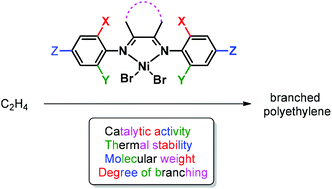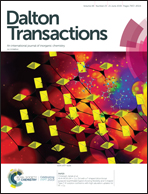Ethylene polymerization of nickel catalysts with α-diimine ligands: factors controlling the structure of active species and polymer properties
Abstract
α-Diimine and related complexes of late transition metals such as palladium and nickel have been attracting continuing interest as single-site catalysts of ethylene homopolymerization to branched polyolefins, having challenging mechanical properties. The state-of-the art catalysts demonstrate promising catalytic activities, and enhanced thermal stabilities, affording polyethylenes with a variable degree of branching and, in addition, are able to incorporate polar co-monomers into polyethylene structures. At the same time, fundamental understanding of the structure–reactivity relationships of such catalysts mostly remains at the phenomenological level, due to the lack of experimental data on the solution structures of intermediates that drive the polymerization process. In this perspective, we discuss recent advances of α-diimine nickel based catalysts of ethylene polymerization, focusing on the relationships between the catalyst structures on the one hand, and their thermal stabilities and properties of the resulting polyethylene, on the other hand. In addition, some intriguing novel mechanistic findings of these catalyst systems are presented.

- This article is part of the themed collections: 2019 Frontier and Perspective articles and Nitrogen Ligands


 Please wait while we load your content...
Please wait while we load your content...